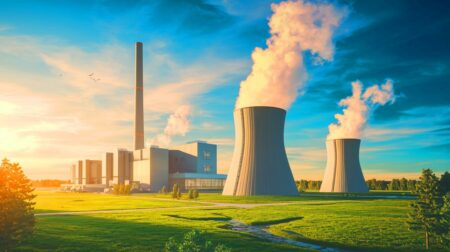The aviation industry produces around 2% of manmade CO2 emissions and is responsible for 12% of CO2 emissions from all transport sources. Airplanes burn plenty of fuel, but we can make them plenty more efficient.
One way of doing so would be to power planes with a combination of fossil fuel and batteries. Such hybrid-electric airplanes are nowhere near on the horizon, but one day they may be flying in the sky. That day, though, is around 25 years from now, experts say.
Scientists at the University of Illinois have looked at various configurations of fuel and battery to see which ones would yield the best results in ensuring that planes kept their carrying capacity and range yet on drastically reduced emissions. To do so, they explored how much net carbon emissions various hybrid-electric planes would emit based on their fuel use as well as on carbon use needed to charge their batteries.
“In the energy supply chain there’s a phrase, from ‘well to wake.’ That is, fuel production begins at the oil well and ends at the wake of the airplane,” explains Phillip Ansell, an assistant professor at the university’s Department of Aerospace Engineering. “Tracking costs and environmental implications across this entire lifecycle is important, because the implications for fuel and energy production can be substantially different, depending on the source.”
This is where things get complicated. Even if an airplane is designed to burn less fuel and rely more on an electric battery, it matters where the power needed to charge that battery comes from. In order for a hybrid-electric plane’s carbon footprint to be significantly reduced, it would need to have its battery charged with low-carbon sources like renewables rather then coal-fired plants. “You can get a fuel burn reduction, but if the cleanliness of the electrical grid that’s being used to charge the battery system is not included, you’re missing a significant part of the carbon emissions total,” Ansell notes.
In addition, to be commercially viable, new hybrid-electric aircraft will need to have the same carrying capacity and to travel the same distances as current aircraft can.
In their study, the scientists used as their model a airplane with a single aisle that can carry 140 passengers. The best configuration of fuel and electric battery, they found, involved a propulsion system that relies on a 50% electrical-power drivetrain with a battery that has an energy density of 1,000 watt-hours per kilogram. That way, a modern hybrid aircraft would produce 49.6% emissions during its lifecycle. Current battery technologies are nowhere near the required level, however. That means batteries will need to be drastically improved in order for hybrid-electric airplanes to become commercially viable.
“Achieving the technology improvements for a 50% hybrid system certainly has a very long timetable to get to market, by a long shot, because it’s entirely uncertain if or when that level of energy density of batteries will be manufactured,” Ansell cautions. “But at least in the interim, even small gains in component technologies can make a big difference.”
He adds: “Perhaps in the next 10 years we’ll be able to have a battery that is 400 to 600 watt-hours per kilogram. If we project that out, the levels that we need for larger hybridization factors, or even fully electric commercial aircraft, might be within reach in the next 25 years.”
Did you like it? 4.7/5 (29)








